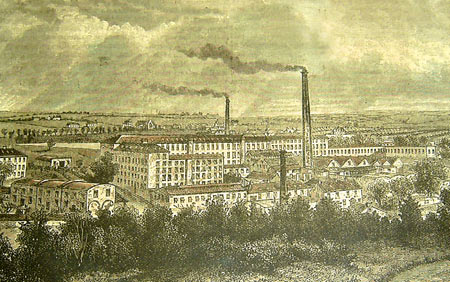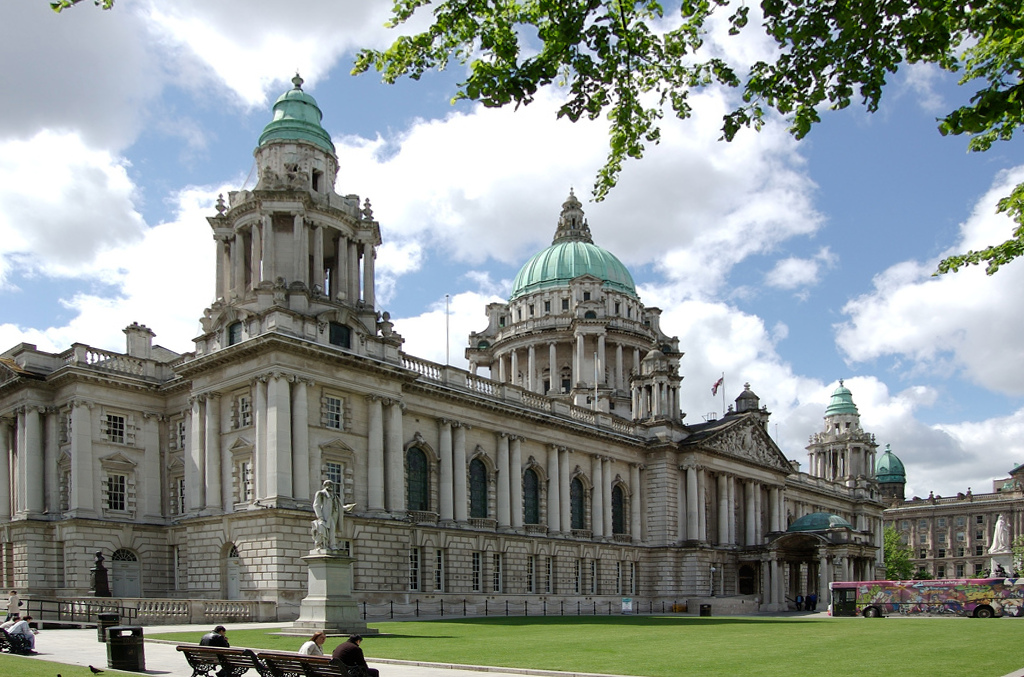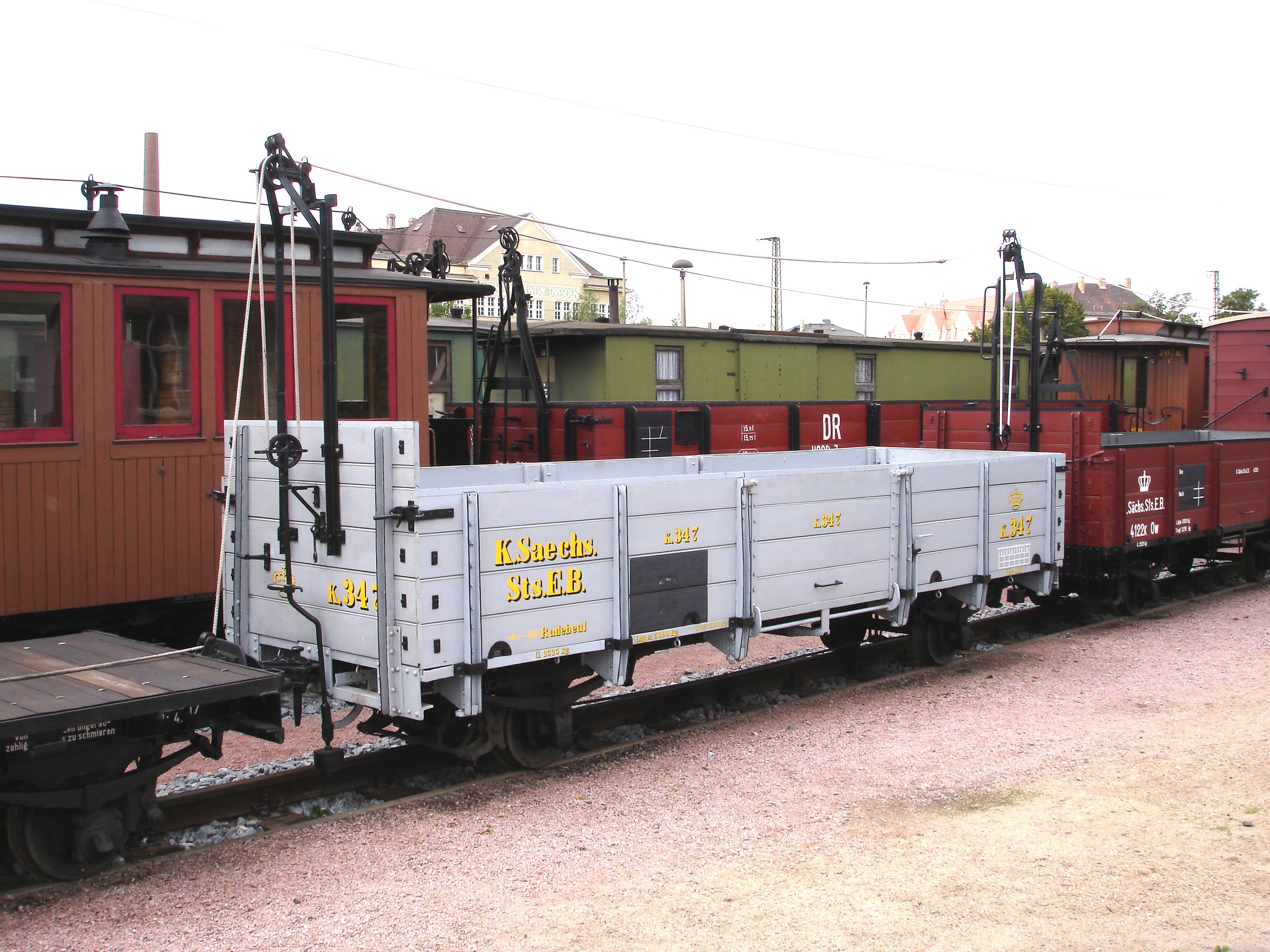|
Bessbrook And Newry Tramway
The Bessbrook and Newry Tramway operated a narrow gauge, hydro-electrically powered tramway transporting passengers and freight between Bessbrook and Newry in Northern Ireland between 1885 and 1948. History Construction and infrastructure Construction of the Bessbrook and Newry Tramway began in 1883, and the enterprise was incorporated in 1884, after the Tramways and Public Companies (Ireland) Act 1883 came into effect. It was built primarily on the own land of its owners, the Richardsons, and was intended to carry workers and freight from the Great Northern Railway (Ireland) GNR(I), in Newry to the family's flax mill in Bessbrook. In July 1884 Edward Hopkinson was contacted by the company, the ''Bessbrook Spinning Company'' to undertake the installation operation of electric traction for the line - the terms were that Hopkinson would provide locomotive power to operating ten trains each way every day, carrying 100 tons of freight a day, and with a capacity to haul 200 tons a ... [...More Info...] [...Related Items...] OR: [Wikipedia] [Google] [Baidu] |
Bessbrook
Bessbrook is a village in County Armagh, Northern Ireland. It lies about three miles (5 km) northwest of Newry and near the Newry bypass on the main A1 Belfast- Dublin road and Belfast-Dublin railway line. Today the village of Bessbrook straddles the three townlands of Maghernahely, Clogharevan and Maytown. Bessbrook is near Newry railway station. It had a population of 2,750 at the 2011 Census. This article contains quotations from this source, which is available under th Open Government Licence v3.0 © Crown copyright. The model village of Bessbrook, Co. Armagh is a visible memorial to the commercial endeavours of the Richardson family over a number of generations. During the late 20th century some of the worst violence of " the Troubles" took place near the village and it became a military zone with a large garrison. The small village became the busiest (military) heliport in Europe. History Bessbrook is named from Elizabeth or Bess Nicholson, wife of Joseph ... [...More Info...] [...Related Items...] OR: [Wikipedia] [Google] [Baidu] |
Ashbury Railway Carriage And Iron Company Ltd
The Ashbury Carriage and Iron Company Limited was a manufacturer of railway rolling stock founded by John Ashbury in 1837 in Commercial Street, Knott Mill in Manchester, England, near the original terminus of the Sheffield, Ashton-under-Lyne and Manchester Railway. It moved to Ashton Old Road, Openshaw in 1841 and became a limited company in 1862 as The Ashbury Railway Carriage and Iron Company. After the founder's death in 1866, the company was owned by his son, James Lloyd Ashbury. In 1898 the works covered about and employed about 1,700. In 1902 the business was transferred to Saltley in Birmingham when it merged with Ashbury, Brown and Marshalls. This was absorbed into the Metropolitan Amalgamated Railway Carriage & Wagon Company, which later became the Metropolitan-Cammell Carriage & Wagon Co. Examples of its rolling stock survive to this day on preserved railways all over the world. The company name was revived in 2004 by the Welsh Highland Heritage Railway in North Wa ... [...More Info...] [...Related Items...] OR: [Wikipedia] [Google] [Baidu] |
City And South London Railway
The City and South London Railway (C&SLR) was the first successful deep-level underground "tube" railway in the world, and the first major railway to use electric traction. The railway was originally intended for cable-hauled trains, but owing to the bankruptcy of the cable contractor during construction, a system of electric traction using electric locomotives—an experimental technology at the time—was chosen instead. When opened in 1890, the line had six stations and ran for Length of line calculated from distances given at in a pair of tunnels between the City of London and Stockwell, passing under the River Thames. The diameter of the tunnels restricted the size of the trains, and the small carriages with their high-backed seating were nicknamed '' padded cells''. The railway was extended several times north and south, eventually serving 22 stations over a distance of from Camden Town in north London to Morden in south London. Although the C&SLR was well used, low ... [...More Info...] [...Related Items...] OR: [Wikipedia] [Google] [Baidu] |
Newry Railway Station
Newry railway station ( ga, Stáisiún Iúr Cinn Trá) serves Newry and Bessbrook in Northern Ireland. The station is located in the northwest of Newry, County Armagh on the Dublin-Belfast line close to the Craigmore Viaduct. History The port of Newry was already a transport hub by 1742 with the opening of the Newry Canal to Lough Neagh. By the start of the twentieth century Newry had become a railway hub, with the Belfast to Dublin line passing to the west of the town, while lines from the ports of Warrenpoint and Greenore either side of Carlingford Lough converged closer to the centre of town where stations were more conveniently situated. All converged at to the north of Newry where a line also diverged off to the north-west towards Armagh. The current Newry station originally opened in 1855 as ''Newry Main Line'', renamed ''Bessbrook & Newry Main Line'' in 1866, renamed again as ''Bessbrook'' in 1880 before closing in 1942. With this closure Newry was served by t ... [...More Info...] [...Related Items...] OR: [Wikipedia] [Google] [Baidu] |
Ulster Folk And Transport Museum
The Ulster Folk Museum and the Ulster Transport Museum are situated in Cultra, Northern Ireland, about east of the city of Belfast. The Folk Museum endeavours to illustrate the way of life and traditions of the people in Northern Ireland, past and present, while the Transport Museum explores and exhibits methods of transport by land, sea and air, past and present. The museums rank among Ireland's foremost visitor attractions and is a former Irish Museum of the Year. The location houses two of four museums included in National Museums Northern Ireland. History Created by an Act of Parliament in 1958, the Folk Museum was created to preserve a rural way of life in danger of disappearing forever due to increasing urbanisation and industrialisation in Northern Ireland. The site the museum occupies was formally the Estate of Sir Robert Kennedy, and was acquired in 1961, with the museum opening to the public for the first time three years later in 1964. In 1967, the Folk Museum merged ... [...More Info...] [...Related Items...] OR: [Wikipedia] [Google] [Baidu] |
Belfast Corporation
Belfast City Council ( ga, Comhairle Cathrach Bhéal Feirste) is the local authority with responsibility for part of the city of Belfast, the capital and largest city of Northern Ireland. The Council serves an estimated population of (), the largest of any district council in Northern Ireland, while being the smallest by area. Belfast City Council is the primary council of the Belfast Metropolitan Area, a grouping of six former district councils with commuter towns and overspill from Belfast, containing a total population of 579,276. The council is made up of 60 councillors, elected from ten district electoral areas. It holds its meetings in the historic Belfast City Hall. The current Lord Mayor is Tina Black of Sinn Féin. As part of the 2014/2015 reform of local government in Northern Ireland the city council area expanded, and now covers an area that includes 53,000 additional residents in 21,000 households. The number of councillors increased from 51 to 60. The first e ... [...More Info...] [...Related Items...] OR: [Wikipedia] [Google] [Baidu] |
Ulster Transport Museum, Cultra, Bessbrook And Newry Tramway Company, Tram No 2
Ulster (; ga, Ulaidh or ''Cúige Uladh'' ; sco, label=Ulster Scots, Ulstèr or ''Ulster'') is one of the four traditional Irish provinces. It is made up of nine counties: six of these constitute Northern Ireland (a part of the United Kingdom); the remaining three are in the Republic of Ireland. It is the second-largest (after Munster) and second-most populous (after Leinster) of Ireland's four traditional provinces, with Belfast being its biggest city. Unlike the other provinces, Ulster has a high percentage of Protestants, making up almost half of its population. English is the main language and Ulster English the main dialect. A minority also speak Irish, and there are Gaeltachtaí (Irish-speaking regions) in southern County Londonderry, the Gaeltacht Quarter, Belfast, and in County Donegal; collectively, these three regions are home to a quarter of the total Gaeltacht population of Ireland. Ulster-Scots is also spoken. Lough Neagh, in the east, is the largest lake in t ... [...More Info...] [...Related Items...] OR: [Wikipedia] [Google] [Baidu] |
Dublin And Lucan Tramway
The Dublin and Lucan Steam Tramway operated a narrow gauge steam tramway service between Dublin and Lucan between 1880 and 1897. The company was renamed as the Dublin and Lucan Electric Railway Company and steam power was replaced by electricity in 1897. This service ran until 1925. Dublin and Lucan Steam Tramway The first public reference to this tramway scheme was in the Irish Times on 19 April 1880, wherein it was reported that the County Dublin Grand Jury had a proposal before them for the building of the line. The Dublin and Lucan Steam Tramway (DLST) was authorised by an Order in Council under the Tramways Act. A prospectus appeared in the Irish Times on 27 November 1880. The capital was £30,000, comprising 3,000 shares of £10 each, with borrowing powers of £10,000 on the debentures. The board of management comprised: *Colonel Charles Colthurst Vesey, D.L., J.P. (Chairman) (Lucan House) *William Moran, J.P. (Vice Chairman) (St. Edmundsbury, Lucan) *James Macken (of Jam ... [...More Info...] [...Related Items...] OR: [Wikipedia] [Google] [Baidu] |
The Millvale Level-crossing Of The Bessbrook And Newry Tramway, The 1st Successful Use Of Overhead Power Cables
''The'' () is a grammatical article in English, denoting persons or things that are already or about to be mentioned, under discussion, implied or otherwise presumed familiar to listeners, readers, or speakers. It is the definite article in English. ''The'' is the most frequently used word in the English language; studies and analyses of texts have found it to account for seven percent of all printed English-language words. It is derived from gendered articles in Old English which combined in Middle English and now has a single form used with nouns of any gender. The word can be used with both singular and plural nouns, and with a noun that starts with any letter. This is different from many other languages, which have different forms of the definite article for different genders or numbers. Pronunciation In most dialects, "the" is pronounced as (with the voiced dental fricative followed by a schwa) when followed by a consonant sound, and as (homophone of the archaic pro ... [...More Info...] [...Related Items...] OR: [Wikipedia] [Google] [Baidu] |
Connecting Rods
A connecting rod, also called a 'con rod', is the part of a piston engine which connects the piston to the crankshaft. Together with the crank, the connecting rod converts the reciprocating motion of the piston into the rotation of the crankshaft. The connecting rod is required to transmit the compressive and tensile forces from the piston. In its most common form, in an internal combustion engine, it allows pivoting on the piston end and rotation on the shaft end. The predecessor to the connecting rod is a mechanic linkage used by water mills to convert rotating motion of the water wheel into reciprocating motion. The most common usage of connecting rods is in internal combustion engines or on steam engines. __TOC__ Origins The predecessor to the connecting length is the mechanical linkage used by Roman-era watermills. The earliest known example of this linkage has been found at the late 3rd century Hierapolis sawmill in Roman Asia (modern Turkey) and the 6th century s ... [...More Info...] [...Related Items...] OR: [Wikipedia] [Google] [Baidu] |
Chain Brake
A Heberlein brake is a continuous railway brake used in Germany that is applied by means of a mechanical cable. Train braking is therefore initiated centrally from the locomotive using a winder. This causes the brake clips to be applied on individual wagons, assisted by a servo system which makes use of the rotation of the axle. The brakes operate automatically if the cable snaps. A typical feature of ''Heberlein'' brakes is the clearly visible cable run on top of the wagons, but cables can also be led underneath the wagons, as on the '' Spreewaldbahn'' railway line. ''Heberlein'' brakes were eventually largely replaced by compressed-air brakes or, sometimes, by vacuum brakes on narrow gauge railway vehicles. Modern use The ''Heberlein'' brake is still permitted as an operating brake on German railways due to it being both continuous and automatic, and at the low speeds on narrow gauge lines this means it is perfectly safe. On several narrow gauge railways in Saxony, numerous ... [...More Info...] [...Related Items...] OR: [Wikipedia] [Google] [Baidu] |
UIC Classification Of Locomotive Axle Arrangements
The UIC classification of locomotive axle arrangements, sometimes known as the German classification''The Railway Data File''. Leicester: Silverdale, 2000. p. 52. . or German system,Kalla-Bishop P.M. & Greggio, Luciano, ''Steam Locomotives'', Crescent, 1985, p. 226. describes the wheel arrangement of locomotives, multiple units and trams. It is used in much of the world, notable exceptions being the United Kingdom, which uses a slightly simplified form of UIC (except for steam locomotives and small diesel shunters, where Whyte notation is used), and in North America, where the AAR wheel arrangement system (essentially another simplification of the UIC system) is used to describe diesel and electric locomotives; Whyte notation is used in North America only for steam locomotives. The classification system is managed by the International Union of Railways (UIC). Structure The UIC uses the following structure: ; Upper-case letters : Indicate driving axles, starting at A for a si ... [...More Info...] [...Related Items...] OR: [Wikipedia] [Google] [Baidu] |






.png)

